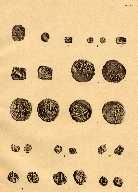
Plate I
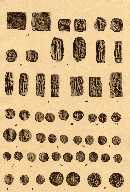
Plate II
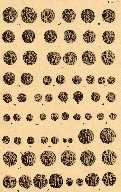
Plate III
Codrington's
Ceylon Coins and Currency
1924 First Edition
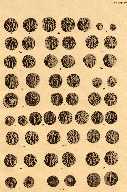
Plate IV
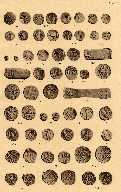
Plate V
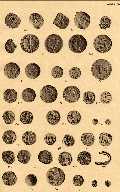
Plate VI
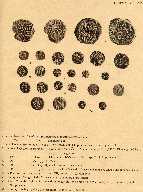
Supplementary Plate
However please note that the coin images in Codrington's Ceylon Coins & Currency are photographs of plaster casts of the coins.

Plate I | 
Plate II | 
Plate III | Plates from Codrington's Ceylon Coins and Currency 1924 First Edition |

Plate IV | 
Plate V | 
Plate VI | 
Supplementary Plate |
Linked above are scanned images at 600 dpi resolution saved in medium quality 50% jpg compression. The original 1200 dpi scanned image have been descreened by convolving with a Gaussian 2 pixel blur using that Filter menu option in PhotoShop.
Note that each of the large image Files are about 2 MB and
will take about 10 min to download on a 56K dialup modem.
When time permits I will cut these scanned plate images and put online
a Codrington catalog with individual 600 dpi scans of both sides of
each coin.
The First edition is rare and sold on Auction for over $300/- ten
years ago.
I have my Grandfather's green cloth covered copy of the 1924 First Edition
of Codrington's Ceylon Coins and Currency.
Although most of the text pages are brittle the
7 plates printed on better paper are in excellent condition.
The low cost 1993 reprint sells for under $3 in the Colombo Museum BookShop. With high quality printouts of these Plates from the 1924 edition you have get the best primary reference on Ceylon Coins and Currency for minimum cost.
I thank Ed Krivoniak for doing the scans of the seven plates from the original edition of Codrington at 1200 dpi on a high quality 2400 dpi scanner and making me a set of prints which are almost better than the original.
The original high resolution 1200 dpi scans are very large and in uncompressed TIF format about 300MB each. At this scan resolution the individual pixel of even the 1924 edition are visible. Since what is of interest is the surface of the coin and not the printout, descreen with a Gaussian Blur helps highlight the features that are real on the coin rather than real on the plate when looked at under magnification. It also helps reduce the image size to something practical like 2 MB to put online, down from the 300 MB
I test printed one of the 2MB .jpg images posted above at a computer color print shop. The print although usable was measured to be 200 dpi and only just a bit better than the plates in the 1975 reprint. A PhotoPrint shop gave nice prints but cost $5+tax per 8x10 print. Maybe I should cutup the plates into say about 25 smaller 6x4 plates, each of a single type of coin. A full such set will print for under $9. The printer is the most critical factor. Scanning back the printout at 600 dpi it was clear that Ed's print was the best. The printing process itself does some convolution so not doing any extra Gaussian Blur is better for print outs.
I welcome E-mail comments and any advice. Thanks.